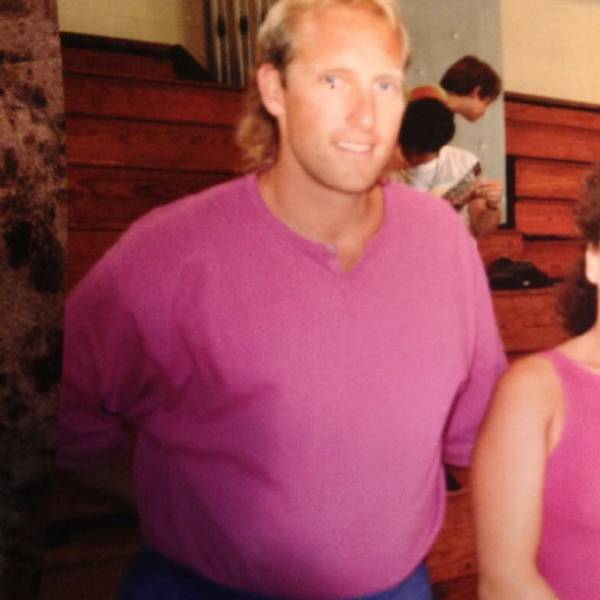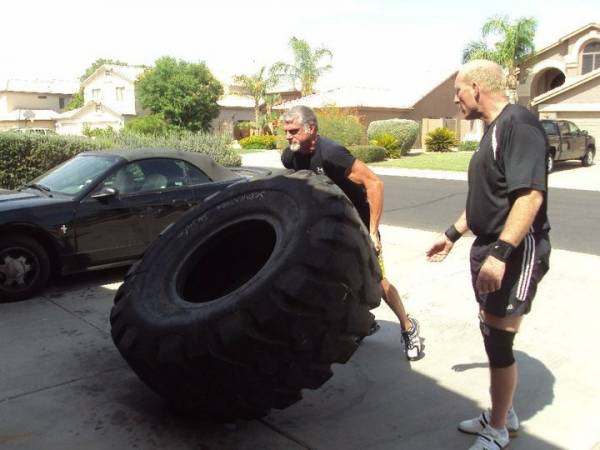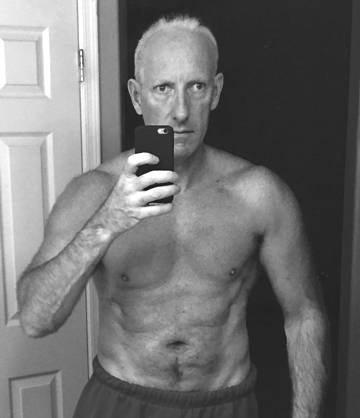Charles is here on a weekly basis to help you cut through the B.S. and get some real perspective regarding health and training. Please post feedback or questions to Charles directly in the comments below this article.
This week I thought I’d share something that many of you might find surprising. For most of my life, I’ve had relatively poor body composition, especially considering my athletic interests and my fairly high-visibility fitness career. In other words, until quite recently, I was fat.
The reason you’d find this surprising is that we tend to assume the experts we follow do everything right, or at least most things. Or we assume they were born with various “gifts” that made their path to success a lot easier. That may be the case for some, but it certainly wasn’t true for me.
Starting Points Matter
I’ll start by sharing a handful of pictures with you. A few of these are fairly old, so please excuse the image quality, but I assure you they’ll suffice for the purpose of illustrating my story.
This first photo is me at age seventeen. I weighed 140lb at my current height of 6’1”. At this stage, I’d been involved in the martial arts for about 5-6 years, had just started to lift, and had an absolutely savage metabolic rate. I ate huge quantities of food, and not much of it was healthy. It was all I could do to maintain the 140lb that I carried in this photo.
Back when food intake and body composition didn’t seem remotely related.
The Takeaway: Whenever you’re evaluating someone’s level of expertise based on physique, it’s helpful to know where he or she started. A female fitness trainer who’s currently 35 percent body fat but who started off weighing 450lb is someone you might want to listen to, just as an example.
Thirty Years of Fat
Fast forward to age 28. By this point, I had been lifting seriously for about ten years, but as you can clearly see, I didn’t have much to show for it. I ate more than my activity levels warranted, and as a result, tipped the scales at about 235lb in this photo.

Somehow, I could look at this photo and not think I was fat.
This was my all-time highest bodyweight. Why was I so fat? A combination of things accounted for it, including poor nutritional knowledge, lack of discipline, and inaccurate body image. I didn’t realize I was fat, believe it or not.
Next, we jump to 2008, age 48. By this point in my life, I was a well-known fitness authority, but as you can see in this photo, oftentimes my clients were in better shape than I was, at least in terms of body composition. I was pretty strong, and the way my body fat was distributed made me look leaner than I actually was, but at 220-225lb, I was at least 20 percent body fat.

Some of my clients had better body composition than I did.
Again, skewed body image and poor nutritional discipline were at the core of this. I definitely knew enough about nutrition to get lean, but just never buckled down and did the hard work required.
The Takeaway: Even the experts you admire most still make mistakes. While they don’t do everything perfectly, the “good” things they do outweigh their mistakes, so the net result is a high level of success. Don’t seek perfection – seek progress. Find your least productive habits and behaviors, and work to improve them.
Time to Get Lean
Then something happened, and I’m not really sure what triggered it. In October of 2012, shortly before my 53rd birthday, I woke up one day, looked in the mirror, and thought, “I don’t need to be this big. It’s about time I get lean once and for all. I need to prove to myself that I can do this.”
I knew I’d need some help, so step one was to find a coach. After quite a bit of research, I settled upon Eric Helms of 3D Muscle Journey. Eric used (and I believe still uses) a “flexible dieting” or “IIFYM” approach. Looking back, I don’t think I would have succeeded had I used any other strategy.
That’s not to say that my new nutritional plan didn’t require some adjustment. It certainly did. In particular, it required that I eat a lot more protein and a lot less fat than I was accustomed to. After about 4-5 days, I realized that I wasn’t quite prepared, and had to call Eric and tell him I’d restart in a few weeks. The next day, I went to the grocery store and took photos of various foods and food labels, looking for ways I could create relatively high-protein, low-fat meals.
That did the trick. Over the course of about 42 weeks, I lost about 22lb, ending up at a bodyweight of about 199lb. Here’s a photo from that timeframe:

At age 54, I finally achieved the body composition I could have had at age 24 with more knowledge and discipline.
Although my new eating strategy did require discipline, I was rarely hungry, and my strength levels actually improved slightly over the course of that year. Most surprisingly, I never realized how good it would feel to be (reasonably) lean. If my 28-year-old self could have seen this photo of me at age 54, he wouldn’t have believed it was possible.
I’ve pretty much maintained about 90-95 percent of my all-time best condition for the past few years. Maintaining takes far less work than improving, and these days I only accurately track my macros if and when my bodyweight begins to climb.
The Takeaway: Do you actually understand enough about nutrition, but fail to apply it to yourself? Or do you not understand enough about nutrition to make it work for yourself? In either case, consider hiring a competent coach.
A Few Final Thoughts
First, it is possible to achieve surprising levels of success later in life, even if you came from humble or unlikely beginnings, as I did. In fact, even though I was covered in fat through my thirties and forties, I had actually gained quite a bit of muscle. It just wasn’t visible until a few years ago.
Second, getting lean takes work and persistence, but it’s also a relatively simple process, and not as painful as many people expect. No, I wasn’t hungry, but at the same time, I wasn’t eating much of the food I otherwise would have if there had been no consequences.
I hope you found this story interesting and perhaps even inspiring. I’m currently working on a book that will include not only my personal story in more detail, but also my approach to training and eating as an “over-40” athlete. I hope you’ll stay tuned, and as always, I welcome your comments and questions.
This Week’s Training:
Volume: 65,324lb (Last Week: 56,744lb)
Significant Lifts:
- Low Bar Squat: 315×3
- Concept2 Rower: 500m/1:46
- Deadlift: 425×5
- Military Press: 125×5
Well as you can see, I dropped down to sets of 5 this week, and managed a few good performances right out of the gate. Spending more time in higher-rep brackets seems to benefit me.
I’m also having fun on the Concept2 rower, even though it spanked me pretty good on Tuesday. After hitting 200 meters in 1:47, I was totally destroyed. Much respect to whoever holds the 2000m world record, which is about 5.5 minutes.
Monday, January 25, 2016
Bodyweight: 200.8lb
Volume: 21,745lb
Goblet Squat
- Set 1: 25lb × 10
- Set 2: 53lb × 10
- Set 3: 70lb × 10
Low Bar Squat
- Set 1: 45lb × 5
- Set 2: 95lb × 5
- Set 3: 135lb × 5
- Set 4: 185lb × 5
- Set 5: 225lb × 5
- Set 6: 275lb × 5
- Set 7: 315lb × 3
- Set 8: 275lb × 5
Seated Calf Raise
- Set 1: 70lb × 8
- Set 2: 70lb × 8
- Set 3: 70lb × 8
- Set 4: 70lb × 8
- Set 1: 5 reps
- Set 2: 5 reps
- Set 3: 5 reps
- Set 4: 5 reps
45° Back Extension
- Set 1: +140lb × 8
- Set 2: +140lb × 8
- Set 3: +140lb × 8
- Set 4: +140lb × 8
Tuesday, January 26, 2016
Bodyweight: 200.2lb
Volume: 1,050lb
Rowing
- Set 1: 0.5 km in 2:00:04
- Set 2: 0.5 km in 0:01:47
- Set 3: 0.5 km in 0:01:55
Goblet Squat
- Set 1: 35lb × 10
- Set 2: 35lb × 10
- Set 3: 35lb × 10
Wednesday, January 27, 2016
Bodyweight: 200.2lb
Volume: 11,169lb
Bench Press
- Set 1: 135lb × 5
- Set 2: 165lb × 5
- Set 3: 185lb × 5
- Set 4: 205lb × 5
- Set 5: 210lb × 5
- Set 6: 185lb × 5
Hammer Row
- Set 1: 90lb × 8
- Set 2: 140lb × 8
- Set 3: 140lb × 8
Lying Dumbbell Tricep Extension
- Set 1: 60lb × 8
- Set 2: 70lb × 8
- Set 3: 78lb × 8
Bicep Curl (Dumbbell)
- Set 1: 70lb × 8
- Set 2: 70lb × 8
Thursday, January 28, 2016
Bodyweight: 200.2lb
Volume: 22,150lb
Deadlift
- Set 1: 135lb × 5
- Set 2: 135lb × 5
- Set 3: 185lb × 5
- Set 4: 225lb × 5
- Set 5: 275lb × 5
- Set 6: 315lb × 5
- Set 7: 365lb × 5
- Set 8: 425lb × 5 (Video Below)
- Set 1: 45lb × 10
- Set 2: 90lb × 8
- Set 3: 115lb × 8
- Set 4: 140lb × 8
- Set 5: 140lb × 8
- Set 6: 140lb × 8
- Set 1: 200lb × 8
- Set 2: 200lb × 8
- Set 3: 200lb × 8
- Set 4: 200lb × 8
Friday, January 29, 2016
Bodyweight: 200.4lb
Volume: 9,210lb
Military Press
- Set 1: 45lb × 10
- Set 2: 65lb × 8
- Set 3: 85lb × 6
- Set 4: 105lb × 5
- Set 5: 115lb × 5
- Set 6: 125lb × 5
- Set 7: 95lb × 5
Pull Up
- Set 1: 5 reps
- Set 2: 5 reps
- Set 3: 5 reps
- Set 4: 5 reps
- Set 5: 5 reps
EZ Bar Curl
- Set 1: 65lb × 8
More on Body Composition:
- Let’s Talk About Diet, Part 2: Macronutrients
- Get Back to Fighting Weight and Conquer Race Season
- Your Diet Needs a Reality Check
- New on Breaking Muscle Today
Photos courtesy of Charles Staley.






